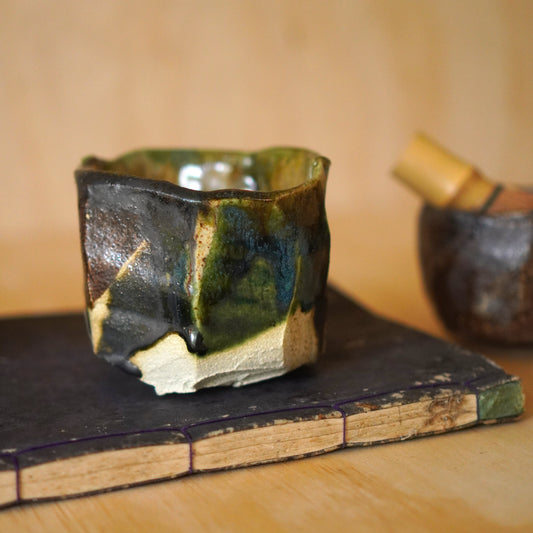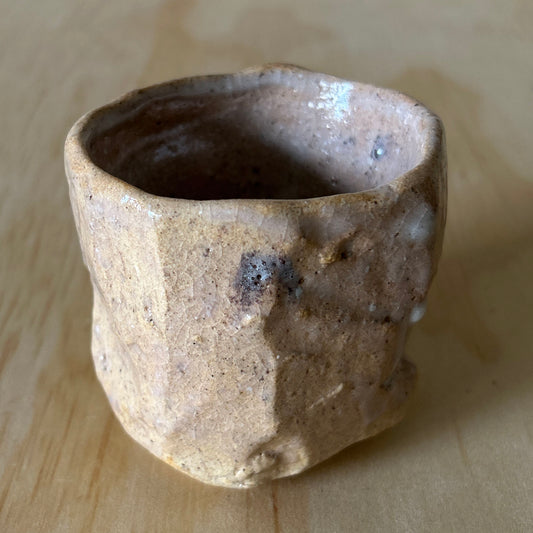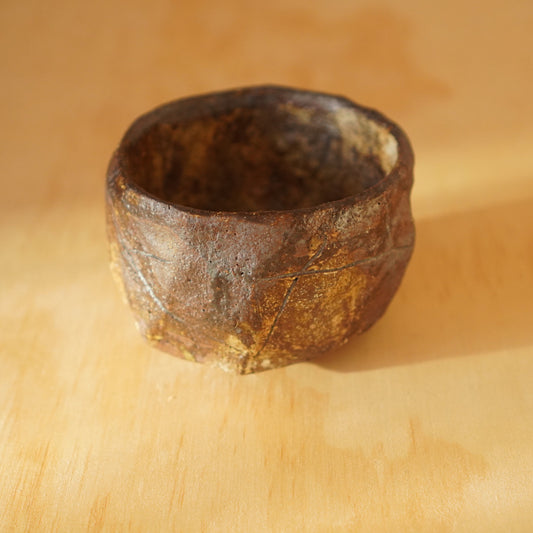At Kanso House, we deeply appreciate craftsmanship that embodies simplicity, imperfection, and timeless beauty. That’s why we’re thrilled to introduce the work of Sydney-based ceramicist Don Ricardo, whose pieces perfectly align with the wabi-sabi philosophy. Don’s journey into ceramics is one of self-discovery, artistic exploration, and a deep respect for traditional craft.
We recently spoke with Don about his inspirations, techniques, and connection to Japanese aesthetics.

From Ikebana to Clay: A Self-Sufficient Journey
Don’s path to ceramics was far from conventional. His interest in ikebana (Japanese floral arrangement) and kusamono (small plant displays) led him to search for the perfect vessels. Finding few options outside of Japan, he decided to make his own. This hands-on approach quickly grew into a passion:
“I fell in love with clay from day one,” Don recalls. “There were few options outside of buying from Japan to get ceramics for my hobbies. Because I have this self-sufficient nature, I just thought I would start making vases and pots myself.”
His background in menswear, kinetic sculpture, furniture, and jewelry provided a strong foundation for his approach to ceramics.
“One of the great things about exploring different art forms is the ‘can-do’ attitude. I know if I keep working at it and keep learning as much as I can, I can make what I want.”
Elements from his menswear background, such as a limited colour palette, deconstructed form, imperfection, and asymmetry, continue to influence his ceramic work.
Wabi-Sabi in Practice
For Don, wabi-sabi is more than just an aesthetic—it’s a philosophy to live by.
“Wabi-sabi isn’t just about aesthetics; it’s about embracing imperfection, transience, and the natural cycle of life. The fragility of human life, our planet, and everything we see informs my practice every day. My pieces may last a long, long time. What can I make that will be a future antique, or a future fossil?”
This perspective shapes both his creative process and the final works. Instead of forcing clay into rigid forms, he allows it to move, stretch, and settle naturally.
“Imperfection is accepting things as they are and allowing the material to speak, to do its own thing. Not forcing your will on the clay, or the world even. Allowing things just to ‘be.’ I’m not perfect, and neither is my pottery.”

Tools, Materials & the Beauty of ‘Making Do’
Don takes a deeply personal and resourceful approach to his craft, hand-carving his own tools and even sourcing wild clay from his own surroundings.
“Growing up without much money, and living as an artist in my youth, I realised (later!) the beauty in ‘making do.’ The pleasure in working at a bench you built, using pottery tools you hand-carved, or discovering that a scrap piece of metal is the perfect shaping tool is immense. The brushes made from plants, textures created using a favourite stone found on a bushwalk—these all add to the uniqueness of the work.”
Wild clay is another extension of this philosophy. “The clay I use is unique to me—it’s dug in my neighbourhood. When I make something from it, or use it in a glaze, the look is individual. It takes a lot of time to process and test, but the reward, when it works, is just huge.”
A Deep Connection to Japan
Having visited Japan multiple times, Don finds endless inspiration in its ceramics, landscapes, and traditions.
“Using beautiful local ceramics in cafés, temples, and at our accommodation in Koyasan in the mountains of Wakayama was a profound experience. Everyday use of lovely pieces from local potters made me appreciate the simplicity and functionality of Japanese pottery. There is a direct connection to the craftspeople as you sip your tea, or eat a meal.”
A defining moment in his ceramic journey was meeting Miwa Kyusetsu XIII, a master in Japanese pottery. “His work is extraordinary. I totally fan-boy’d him and bowed deeply in respect of a master. Truly a defining moment in my ceramic journey.”
He also cherishes visits to Kyoto’s ceramic galleries, where handling pieces from renowned Japanese potters deepens his appreciation for the craft.
“The ceramic shop of Robert Yellin was a highlight of the last trip. Handling some of the great Japanese masters’ work and being able to discuss them with Robert, who is a specialist in Japanese ceramics, was just so cool.”
The Allure of Japanese Glazes
One of Don’s most striking works features Oribe glaze, a deep, rich green traditionally used in Japanese ceramics.
“The first time I saw Oribe glaze, I knew it was for me. The Japanese Oribe masters who use it just blew my mind. I had to use it. I have a very refined color palette—black, white/neutral, and green. But that green has to be amazing. It has to make you fall in love, to swoon and go dizzy. That green does that for me.”
The glaze itself is full of depth and complexity. “The glaze changes with the thickness, with various wash undercoats and the clay body. It pools in blues, especially combined with ash glazes, and breaks beautifully over rugged pieces, exposing the clay. Just an all-around amazing glaze.”
Alongside Oribe, Don also experiments with ash glazes, which offer infinite variation depending on their composition and application. “Many ceramic artists are known for their glaze. I think it is a great way to be recognized.”
Looking Ahead: A New Chapter
As Don moves into 2025, he feels he’s entering a new stage in his work, consolidating years of experimentation into a more cohesive style.
“I really feel the start of 2025 has been the most important time to date. I’ve been consolidating my techniques into one cohesive look. Throwing large blocks of clay on the road, then pounding with various rocks and blocks of wood, bending and stretching the clay, followed by carving with found sheet metal, before hollowing out these blocks into vessels, kurinuki style.”
For Don, this moment marks the beginning of something new. “It is the culmination of two years of ceramic work, two years of technique that I taught myself, to produce work that is completely mine. I feel I have finally arrived at—not the destination, but the start of a new journey, and that is exciting.”
Now Available at Kanso House
We’re honored to stock a limited selection of Don Ricardo’s ceramics, each piece a reflection of his dedication to craft, material, and philosophy. His work embodies the essence of wabi-sabi—thoughtful, organic, and timeless. Explore the collection and bring a piece of this artistry into your home.












